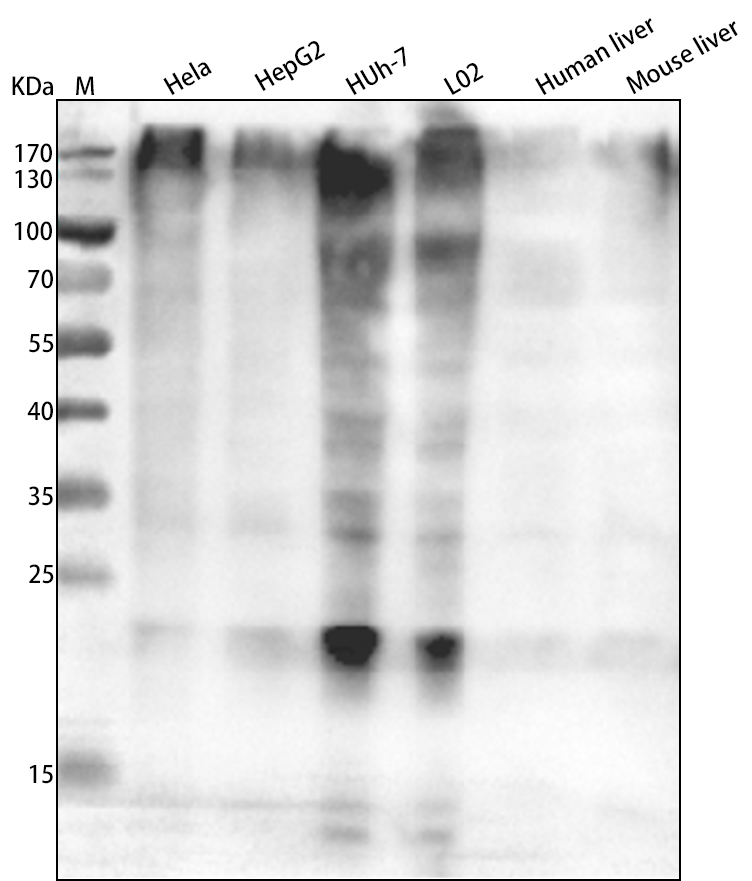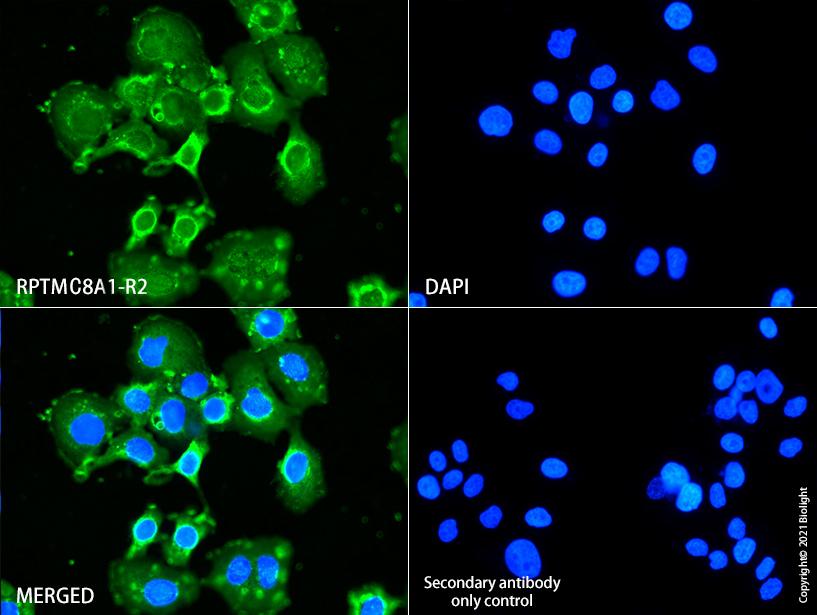
Anti-O-Linked N-Acetylglucosamine Antibody, Recombinant Antibody, R2
产品编号:RPTMC8A1-R2
¥ 询价
规格 100ug
 |
说明书 |
产品名称:Anti-O-Linked N-Acetylglucosamine Antibody, Recombinant Antibody, R2
克隆号:R2
抗体亚型:IgG
经验证的应用:WB/ICC/IF
交叉反应:Human, Mouse, Rat
特异性:Recognizes O-Linked N-Acetylglucosamine
免疫原:O-Linked N-Acetylglucosamine
制备方法:/
来源:Recombinant Rabbit IgG
纯化:Protein A purified
缓冲液:Supplied in PBS, 50% glycerol and less than 0.02% sodium azide, PH7.4
偶联物:Unconjugated
状态:Liquid
运输方式:This antibody is shipped as liquid solution at ambient temperature. Upon receipt, store it immediately at the temperature recommended.
储存条件:This antibody can be stored at 2℃-8℃ for one month without detectable loss of activity. Antibody products are stable for twelve months from date of receipt when stored at -20℃ to -80℃. Preservative-Free. Avoid repeated freeze-thaw cycles.
图片:
Figure1.Western blot analysis of various cell lines and tissue lysats, using RPTMC8A1-R2 at 5ug/ml dilution. Secondary antibody: HRP Goat Anti-Rabbit IgG (H+L) at 1:10000 dilution. Blocking buffer: 5% nonfat dry milk in TBST. Detection: ECL Basic Kit.
Figure2.Immunofluorescent analysis of Hela cells , using RPTMC8A1-R2 (green) at 10ug/ml dilution. Nuclear DNA was labelled in blue with DAPI (blue).
别称:O-GlcNAc, O糖基化
背景信息:A distinct form of protein glycosylation, beta-linked N-acetyl-glucosamine (GlcNAc) moieties can be added to serine or threonine residues of proteins. This differs from other forms of glycosylation, as it typically is a single moiety rather than the complex branched sugars that are more commonly studied. It is thought that these modifications happen in a much more dynamic cycle more reminiscent of phosphorylation modifications. GlcNAc modified proteins are found in the cytoplasm and nucleus and are modulated by means of specific O-GlcNAc transferases (OGT) as well as GlcNAcase activity that can be inhibited using the Thiamet-G (TMG) inhibitor. Mass spectrometry analysis of this modification has been complicated due to the loss of the GlcNAc group during ionization and fragmentation, but methods and technologies such as electron transfer dissociation (ETD) are opening up new avenues to study these modifications. O-GlcNAc could play an important role in many cellular processes, including metabolism, growth, morphogenesis, apoptosis, transcription, and it may play a critical role in cancer.
全称:/


